Red Ashes
Rosso Cenere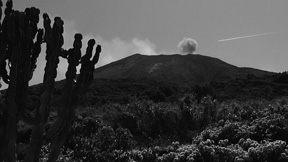 FRANCE, ITALY / 2013 / Italian / Color / Apple ProRes File / 60 min
FRANCE, ITALY / 2013 / Italian / Color / Apple ProRes File / 60 min
Directors: Augusto Contento, Adriano Aprà
Script: Kênya Zanatta, Augusto Contento, Adriano Aprà
Photography, Editing: Augusto Contento
Sound: Kênya Zanatta
Music: Alessandro Celli, Steve Peters, John Tilbury, Machinefabriek
Appearance: Adriano Aprà, Luigi Zaìa, Alfredo Giorgianni, MarioZaìa (“Zazà”), Stefanino Cincotta, Giuliana Adamo
Co-production: Luce Cinecitta, Rossellini Film & TV, Kimerafilm, Canal+
Production Company, Source: Cineparallax
Rosso Cenere explores poetical, mystical and visionary aspects of the island of Stromboli and the film made in 1950 by Roberto Rossellini; Stromboli, Terra Di Dio. It uses archival footage from the restored print of Rossellini’s film, together with sequences from Islands of Fire (1955), shot by Vittorio De Seta in the Aeolian Islands, and footage of Ingrid Bergman out of character, not previously screened in public. The protagonists of the film are four islanders‚ two of whom were directly involved on set in 1950‚ and the film critic Adriano Aprà, a leading authority on the work of the neorealist director. The island of Stomboli itself is gradually revealed through fragments of images containing the words of the islanders alongside the opposing stillness and turbulence of this volcanic island’s past, present, and future.
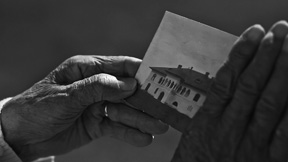 The Search for Emak Bakia
The Search for Emak Bakia
Emak Bakia Baita- SPAIN / 2012 / Basque, French, Italian, Spanish / Color, B&W / Blu-ray / 83 min
Director, Script, Photography, Editing, Producer: Oskar Alegría
Music: Mursego, Leinua dantza taldea, Emak Bakia, El Hijo, Abel Hernández, Richard Griffith, Ruper Ordorika
Sound Design: Abel Hernández
In 1926, Man Ray filmed a cinepoem in the southeast of France, and called it Emak Bakia, which is a Basque expression meaning “Leave me alone.” Oskar Alegría embarks upon an exploration of the film and its title—was it named after the house near Biarritz where the film was shot? Or an inscription on a gravestone? Only three views of the house exist: the image of its front door, two columns of a window, and a section of nearby coast. A search based on these old images would not be easy. There was nothing listed in the archives and no one today remembers the house. Therefore, he would ask for help and assistance from other informers, such as chance and the wind.
When Cinema Reflects the Times—Hou Hsiao-Hsien and Edward Yang
(Eiga ga jidai o utsusu toki—Hou Hsiao-Hsien to Edward Yang)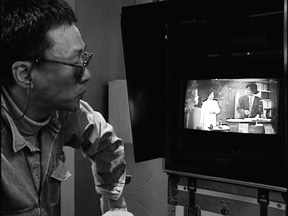 JAPAN / 1993 / Japanese / Color / Blu-ray (Original: HDCAM) / 47 min
JAPAN / 1993 / Japanese / Color / Blu-ray (Original: HDCAM) / 47 min
Research, Structure, Producer: Kore-eda Hirokazu
Planning: Maekawa Mamiko, Kawai Toru
Narration: Emoto Akira
Photography: Suzuki Katsuhiko
Visual Effect: Ike Yoshiaki
Editing: Nakamura Yukihiro
Sound Editor: Saito Naoto
Music: Miyata Ariko
Assistant Researcher: Sato Shiho
Production: TV Man Union, Fuji Television
From the 1980s until the 1990s, New Taiwanese Cinema gained international attention for adopting a completely different approach to that of the commercial films that had preceded it. This piece, which previously appeared on Fuji Television’s documentary program NONFIX, contrasts Hou Hsiao-hsien (1947– ) and Edward Yang (1947–2007), two rivals who were the driving force behind New Taiwanese Cinema. We see a Hou Hsiao-hsien who was willing to wait indefinitely to get the right kind of light, and Edward Yang’s logical and organic approach to directing both his staff and his actors. The contrast between the two directors casts the history of Taiwan into relief. The closing of a cinema invites us to reflect on society and the passage of history.
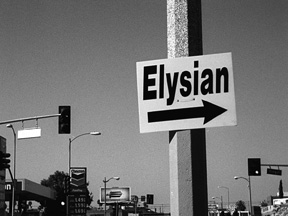 Los Angeles Plays Itself
Los Angeles Plays Itself
- USA / 2003 / English / Color, B&W / Blu-ray / 169 min
Director, Research, Text, Producer: Thom Andersen
Photography: Deborah Stratman
Editing: Yoo Seung-Hyun
Sound: Thor Moser, Craig Smith
Narration: Encke King
Source: The Cinema Guild
How has Los Angeles been used as a film set and how has the city itself been portrayed? Thom Andersen’s history on film explores these questions. Because it is composed for the most part of scenes from other films, for a long time it was not released commercially. In 2014, however, it was re-mastered, re-edited, and released on DVD. Featuring scenes from Double Indemnity (1944), Chinatown (1974), Bladerunner (1982) and many other films, it explores three major uses of Los Angeles; as a setting, as a character, and as a subject. Juxtaposing scenes of the city against a narrative accompaniment, this work exposes the light and dark sides of the metropolis. Through a look at Los Angeles’s “performances,” the rift between reality and mere portrayal emerges.
Cinéastes de notre temps: John Cassavetes
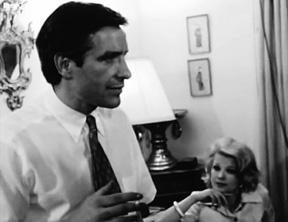 FRANCE / 1969 / English / B&W / Digital BETACAM (Original: 16mm) / 49 min
FRANCE / 1969 / English / B&W / Digital BETACAM (Original: 16mm) / 49 min
Directors: André S. Labarthe, Hubert Knapp
Assistant Director: Luc Béraud
Photography: Daniel Cardot, Jean-Yves Coïc
Editing: Lise Beaulieu, Claude Burel
Appearance: John Cassavetes, Jerry Howard, Gena Rowlands, George Sims
Producers: Janine Bazin, André S. Labarthe
Production Company: ORTF
Source: Institut National de l’Audiovisuel (INA)
We see John Cassavetes (1929–89) in 1965 as he begins editing Faces. After his experience working on Shadows (1959), Cassavetes had situated himself in polar opposition to the world of Hollywood. He responds to questions in his garage, converted into an editing studio, as he works with the assistance of students who had been participants in his workshops. Three years later, after editing of his film is finished, we see him interviewed again, stopping off in Paris on his way to the Venice Film Festival, accompanied by his wife Gena Rowlands. Cassavetes’ countenance is brimming with confidence, signaling, it could be said, the founding of independent cinema.
